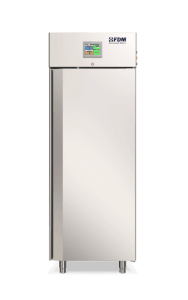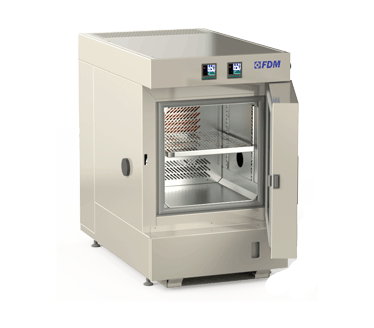
When working with climatic chambers of humidity and temperature it is important to have a solid notion on thermodynamic states and in particular on dew condensation.
In the following article we will find out what the dew point is and why it is important for our tests in the climatic chamber.
Dew Point, Definition
The thermodynamic discipline identifies a series of thresholds that involve the passage of a substance from one state to another. These thresholds are called "points".
The best known of these is undoubtedly the boiling point which identifies the beginning of the gasification process of a liquid. As we all study at school, for water at sea level the boiling point is reached at a temperature of 100 °.
The dew point can be considered the inverse because it identifies the threshold below which a two-phase mixture (such as water and air) becomes saturated with vapor, resulting in a change of state. Condensation forms when the air temperature drops, reducing the amount of energy available to keep the water in the form of vapor that returns to the liquid state.
It is what also in common parlance we call "dew".
Perform
Climate Stress
Discover the new series of Climate Chambers for controlled climate testing
How is the Dew Point measured?
The dew point is linked to three parameters: temperature, humidity and atmospheric pressure.
Assuming that the atmospheric pressure is constant (like the example of water at sea level), the other two parameters are decisive.
For example, at 85 ° and 85% relative humidity, the dew point falls to 80.9 °; at 23 ° the dew point falls to 12 ° if the relative humidity is 50% but at -10 ° if the relative humidity is only 10%.
One of the main standards for measuring the dew point of an environment is ASTM D4230-02.
What is the Dew Point for?
The dew point is a crucial threshold for measuring the relative humidity of an environment. In fact, it is the relative humidity that generates the saturation of a gas and leads to its condensation in dew. As can be seen from the previous examples, a simple equation can make us derive the relative humidity of an environment by knowing its temperature and observing the dew point.
The dew point is used by meteorologists to decipher the climate of an area but it is also important for a whole series of laboratory tests and not least the climatic tests that make use of the climatic chamber of humidity and temperature.
You cannot find the ideal chamber for your test?
Create your own environment, according to any test requirement
The FDM Climate Chamber of Humidity and Temperature
In climatic chambers, the temperature plays a fundamental role together with the other essential parameter: relative humidity.
When conducting climatic tests relating to the corrosion of metals, for example, humidity is the first factor to be taken into consideration.
For this reason it is very important to make sure that the sample we are going to test is always above the dew point in order to prevent condensation from forming, altering the test values.
The FDM climatic chambers guarantee the operator full control of all the parameters taken into consideration, thanks to our two highly technological controllers: stillFACE and revoFACE.
For further needs, please do not hesitate to contact us.
Would you like to receive a quote or do you have questions about the product?
Contact us to receive more information about this Product.



